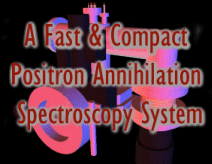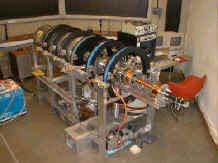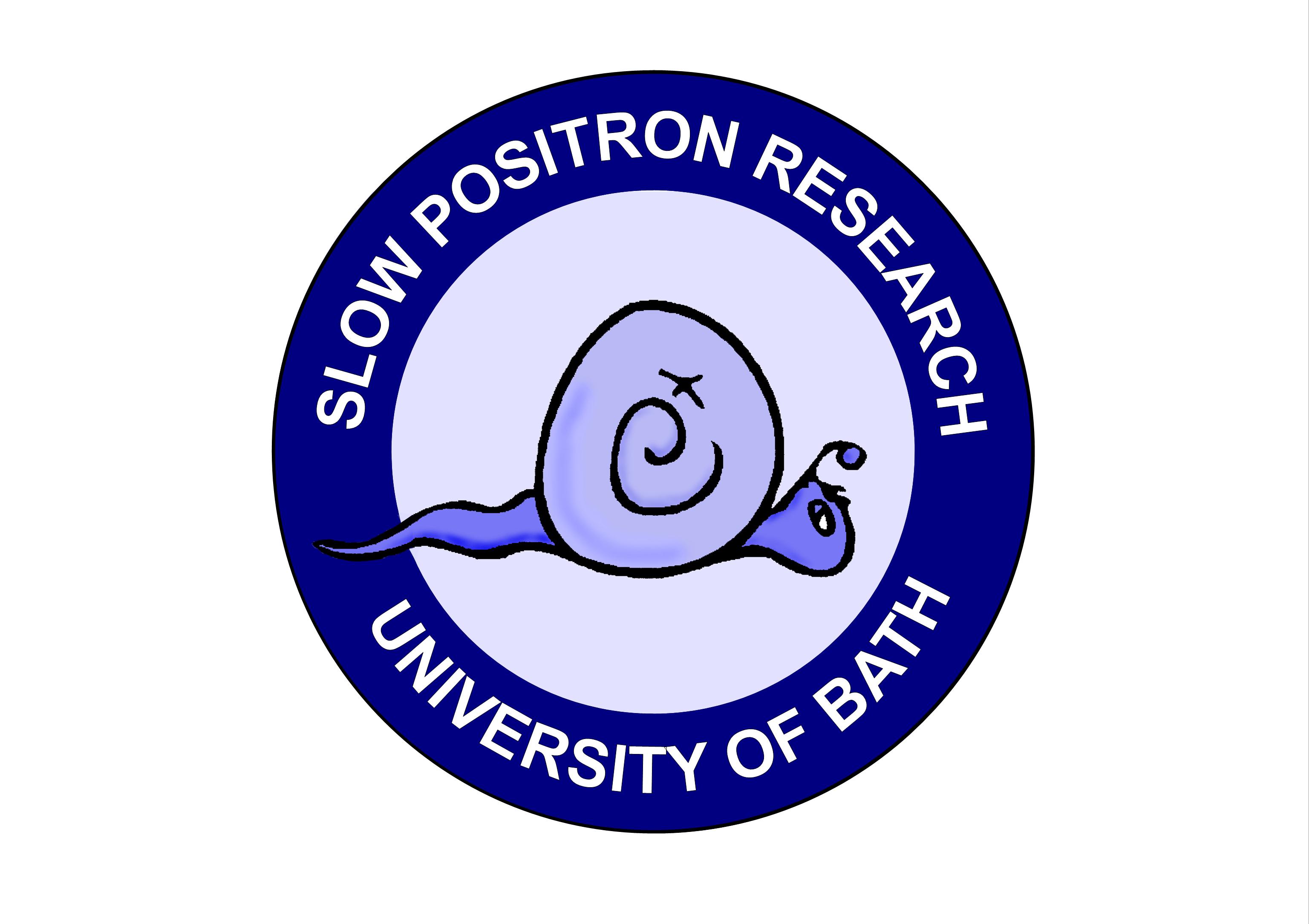|
|
Positron
Annihilation Spectroscopy
The experimental
technique is based on the measurement of the Doppler broadening of the
511keV annihilation gamma line as a function of incident positron
energy (typically in the range 0.1 - 35keV, probing depths from a few
nm up to several m m below a
surface). The measured, broadened linewidth is a linear combination of
contributions from annihilations at the surface and from all possible
subsurface positron states. Reliable data analysis rests upon the
accurate description of positron thermalisation and diffusion in the
materials studied; our collaboration with theorist colleagues is an
important feature of this aspect of the research.
|

CAD Drawing of new PAS
Beam Chamber

The magnetically
confined beam for PAS experiments
|
|
The Bath positron
group has two computer-controlled magnetic-transport positron
beam systems, one of which is used exclusively for slow positron
implantation spectroscopy of subsurface defect structures. Sample
temperatures can be controlled between 16 and 1500K. Past studies
in the group have used electrostatic positron beams for rapid
whole-wafer mapping or the study of small (mm) samples, positron
re-emission spectroscopy and microscopy.
Examples of
experimental studies in recent years are:
- surface
modification of polymer films by laser or plasma treatment
- defects in
relaxed SiGe epilayers
- subsurface
electric fields in doped Cz-Si
- oxygen
agglomerates in doped Si epilayers
- carbon
impurities in edge-defined film-fed growth Si (grown for solar cells)
- defects caused
by the implantation of Ge ions into SiC
- transition
region between SiO2 and Si
- oxygen-related
defects in as-grown Cz-Si
- defect tails
in Ge-implanted Si
- surface damage
in laser-irradiated SiC
- fluorine
diffusion, complexing and agglomeration in Si
- interfaces
between nanocrystals of Si and a silica matrix
- high-resolution
depth profiling of vacancies in ion-implanted Si
- defects in
ferroelectric films
- defects in
high dielectric constant films
- pilot studies
on spin-polarised positron beam spectroscopy
- phase and pore
studies of ice films
|



